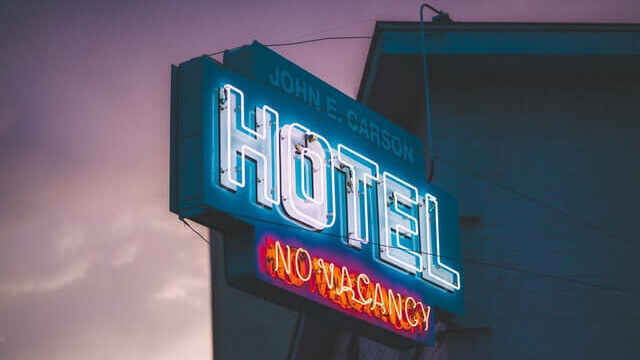
Imagine a couple who wants to celebrate their 25th wedding anniversary in Carmel, California. Both have been busy with work and family; they realize they have a limited window to get away.
NB: This is an article from Duetto
Looking to book so close to their stay date, they know that such a milestone celebration in a place with high demand is going to be costly. OTA websites are showing almost everything as sold out, however, and the few available rooms are either out of town and/or well into the four figures (for a couple of nights’ stay at ultra-premium resorts).
Subscribe to our weekly newsletter and stay up to date
Websites for their three preferred properties (by customer ratings + proximity to quaint and hilly downtown Carmel-by-the-Sea) confirm their worst fears. Indeed, even a two-night weekday stay isn’t going to happen at any of them. Two hotels display “sold out,” but the third one has “contact hotel for availability.”
Aware that OTAs have the knack of overstating bookings and underreporting availability (“Hurry! One room left at this price!”), the couple heads to the third hotel’s website, hoping for a glimmer of light. Indeed they have no regular rooms showing, but they do have an Anniversary special package still available, if the couple would consider a three-night stay. Although pricey, it does include a resort credit for spa, food, and a bottle of wine through a winery partner in Carmel Valley, a 15-minute drive from the hotel.
An extra night. And it will be their most expensive stay in a long time, but it’s still a fraction of the cost of paying thousands for a couple of nights of luxury down the coast. They quickly book and celebrate that they “scored” the last possible deal based on their criteria.
Who made out the best?
While our happy couple has scored a great room in a period of high demand, on short notice, how did our three properties fare? Let’s take a look.
- P1 (denial): sell to 100% capacity; 0 rooms left to sell as of last week. ADR for two denial dates: $425
- P2 (denial): sell to 100% capacity, 0 rooms left to sell as of three months ago. ADR for two denial dates: $395
- P3 (booked): target 90% capacity, booking limit set at 80% until a week before arrival, when a promotional inventory of premium suites in a package deal is released and then quickly sells out. ADR for two stay dates (after factoring in last-minute premium bookings): $600 – PLUS they get the third night at $600 as well.
By holding inventory until their competitors had sold out, P3 was able to secure a higher rated booking (plus an extra less compressed night), while P1 and P2 sold out at $425 and $395 ADRs, respectively.
The “resort credit” is a great tactic to further monetize guest value. Not only is P3 getting the customer at a price that boosts their profit margin AND delights customers that are running out of options, but they’re also able to acquaint new guests with their restaurant and additional services. Don’t forget the partner winery – if that bottle of wine is memorable, the happy couple might just make the short trip to Carmel Valley to buy more, and check out some areas they usually don’t get to. This is an additional win for everyone:
- P3: They get premium wines at a discounted price from the winery, helping boost profits and delighting guests.
- Winery: They get additional traffic from Carmel-by-the-Sea and other local areas, with guests already excited about the wine they have in their rooms.
- Guests: They get to visit an area they don’t usually see, taste (and possibly buy) some great wines they’ve experienced at the hotel, and keep finding amazing places to visit for future celebrations.
Occupancy and labor force
One detail about P3 that you may have noticed is that even in periods of high demand, they’re holding occupancy rates below 100%, at 80% (floating based on their RMS strategies + algorithms), and then flexing as high as 90% for last-minute bookings.
By saving highly profitable bookings for that +/- 10% window, P3 is out-earning their competitors by a good margin, and saving on labor costs during “the new normal” where finding good, local talent is harder than ever. They could opt for full occupancy all the time and find creative ways to staff and clean rooms, but the team is already stretched, and P3’s unwavering commitment to customer service AND their staff helps maintain their high standard on review sites. During high demand periods (where 90% occupancy is desired), staff that work extra hours are paid at a much higher rate for those hours, which doesn’t impact hotel profits as much as you might think – remember, their rates for those days more than cover the incremental labor costs.




